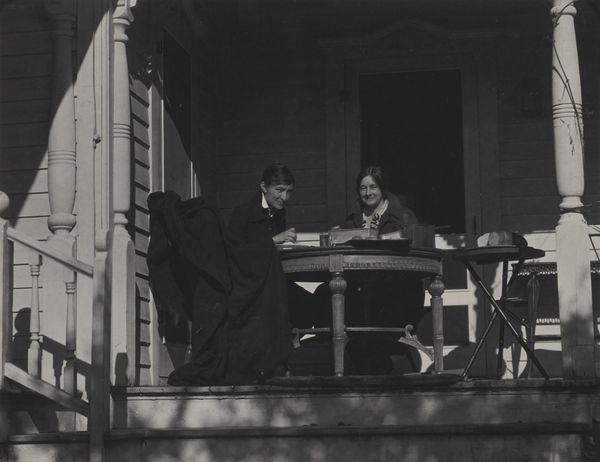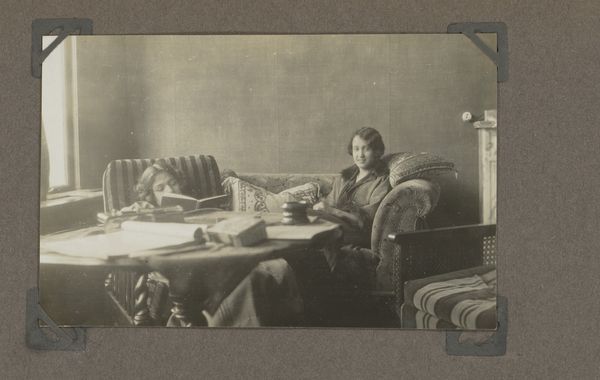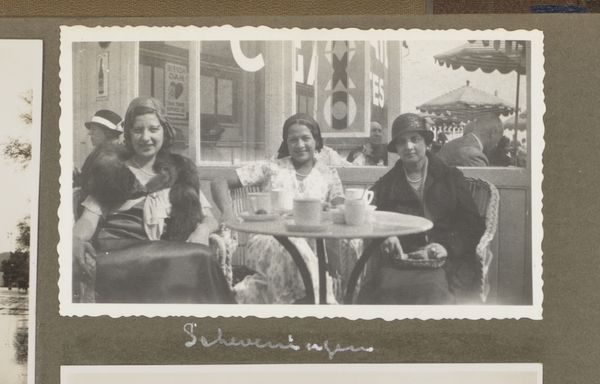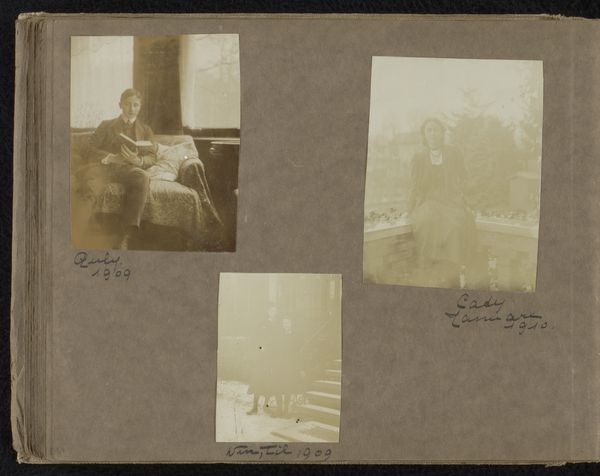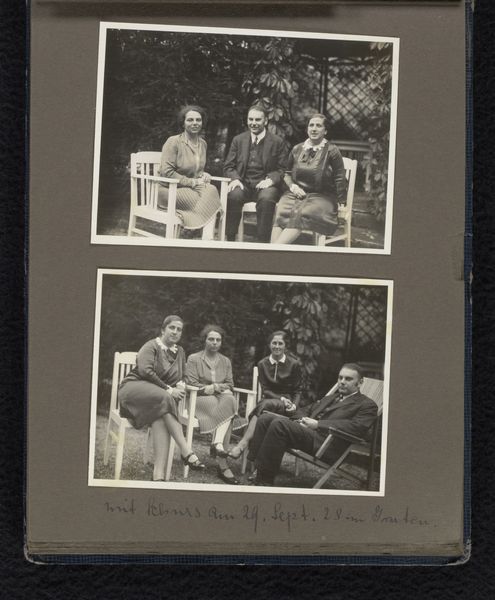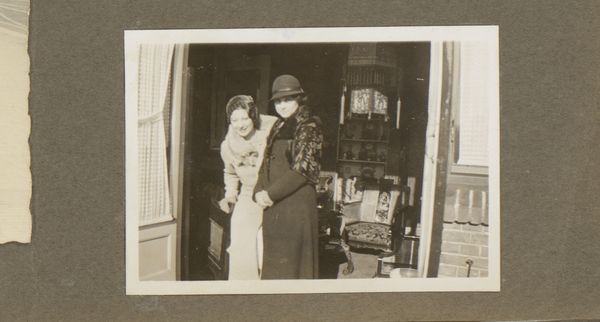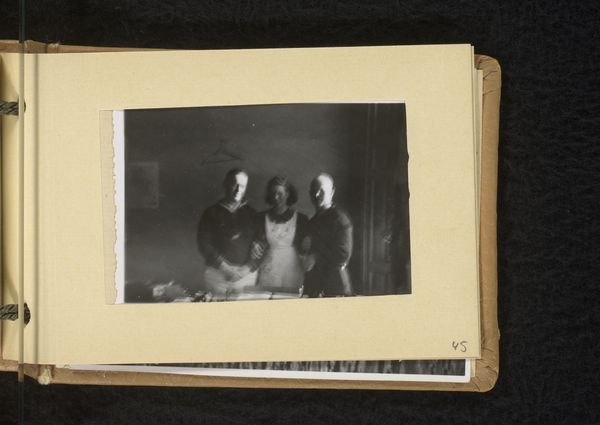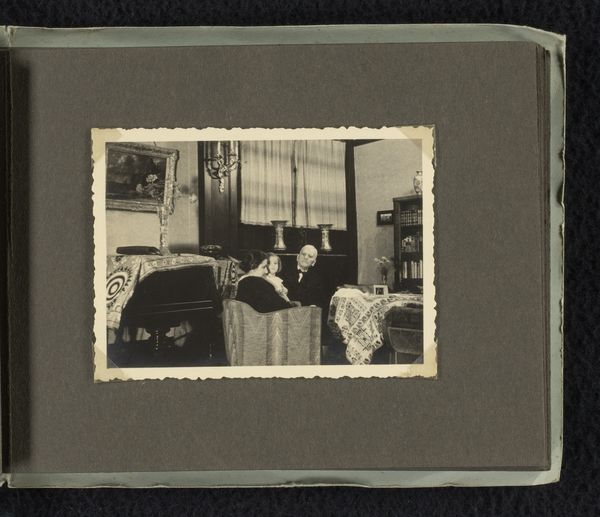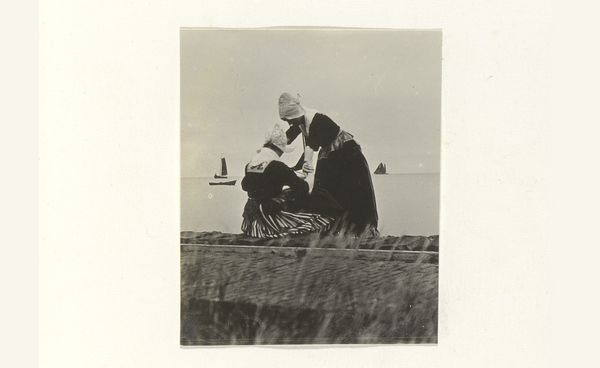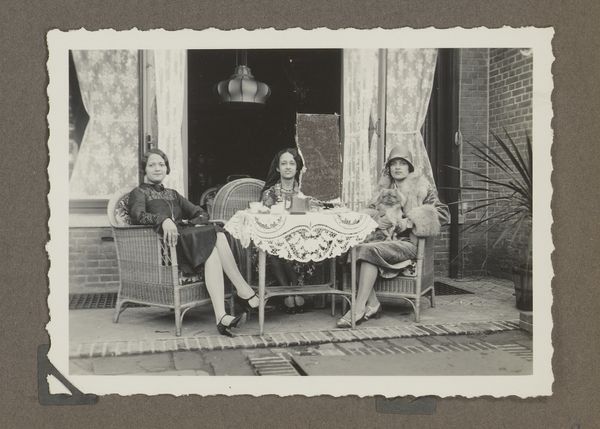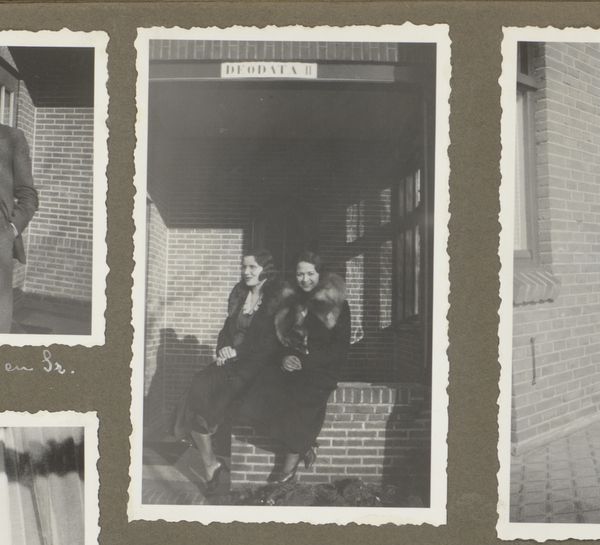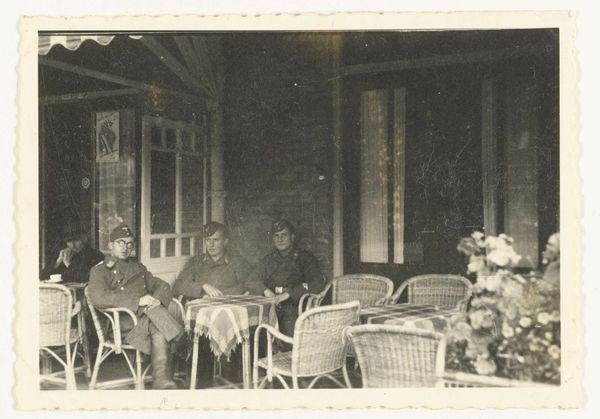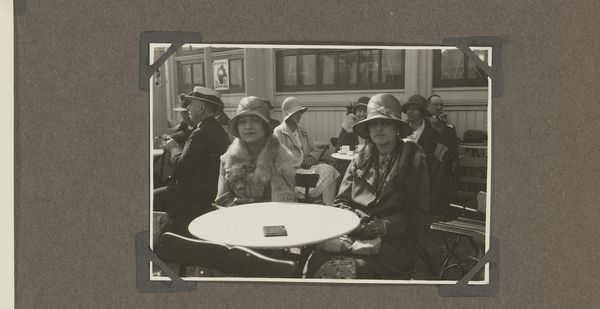
photography
#
portrait
#
photography
#
historical photography
#
genre-painting
Dimensions: height 69 mm, width 113 mm
Copyright: Rijks Museum: Open Domain
Editor: Here we have a photograph titled "Wilhelmina van Zijll de Jong en Reekje Ott de Vries zittend in de zon," taken in 1932. It's a black and white shot of two women seated at a table, seemingly enjoying a sunny day. What I find interesting is the candid nature of it; it feels like a genuine moment captured. What do you see in this piece? Curator: It’s precisely that “genuine moment” that sparks my interest. Beyond the surface of a simple portrait, I see a powerful statement about female companionship and visibility during a period of significant social change. This photograph can be interpreted as an intimate portrayal of women claiming public space, participating in leisure activities, and fostering bonds of friendship. In what ways does the photograph itself signal ideas about these social and cultural shifts? Editor: Well, their clothing and the outdoor setting suggest a level of freedom and mobility. It doesn't scream traditional domesticity. Does the lack of information about the photographer or context contribute to this interpretation? Curator: Absolutely. The anonymity invites us to consider the broader context of women’s self-representation in the early 20th century. This image subverts traditional power dynamics inherent in portraiture, particularly who gets to create the image and how it is circulated. It also demands a careful evaluation of how we, as viewers, project our own assumptions and biases onto these figures from the past. What personal narrative do they have that resists that dominant male-driven perspective? Editor: I never considered how much power is embedded in the act of photographing someone. I'm struck by how such a seemingly simple photo can open up a complex discussion. Curator: Exactly! By situating the work within the context of social and gender dynamics, we enrich our understanding and appreciation. Editor: I learned how crucial it is to dig deeper and question everything that exists beyond the art piece itself. Thanks!
Comments
No comments
Be the first to comment and join the conversation on the ultimate creative platform.
